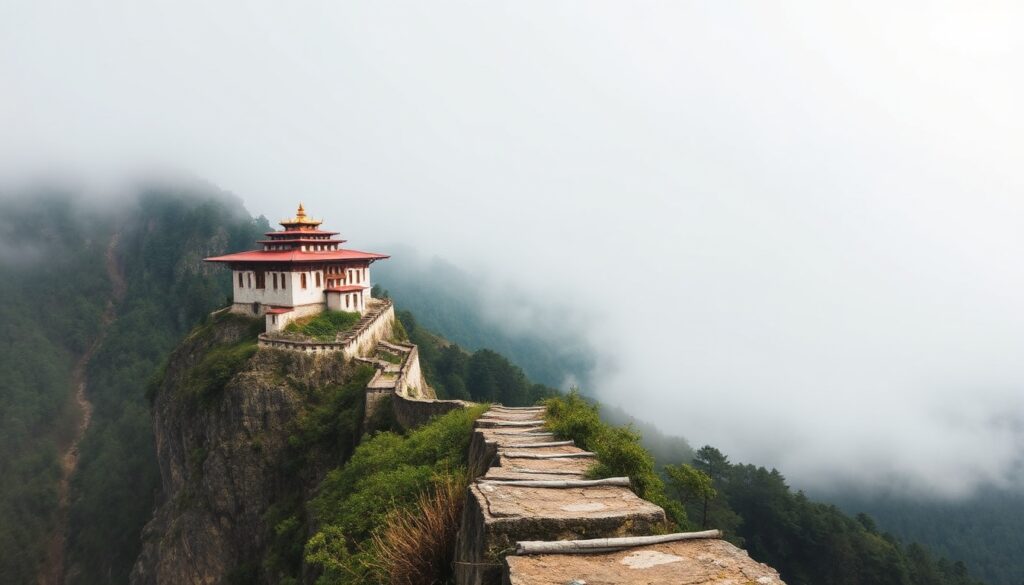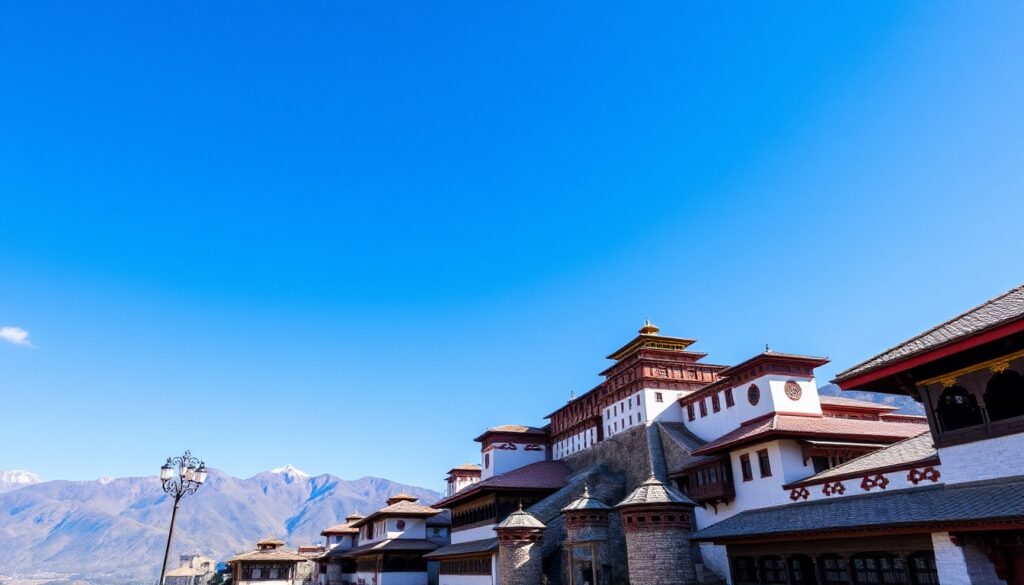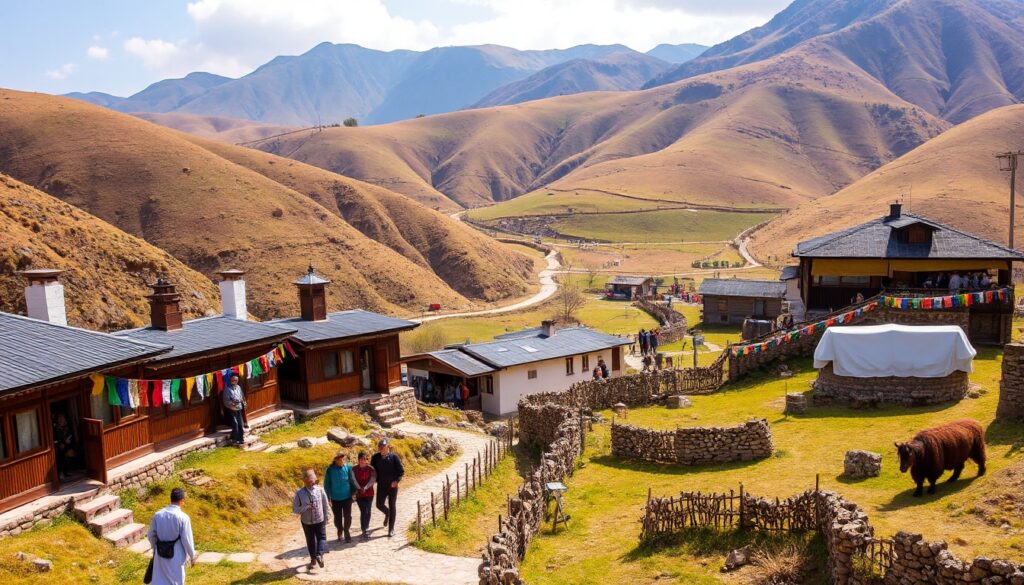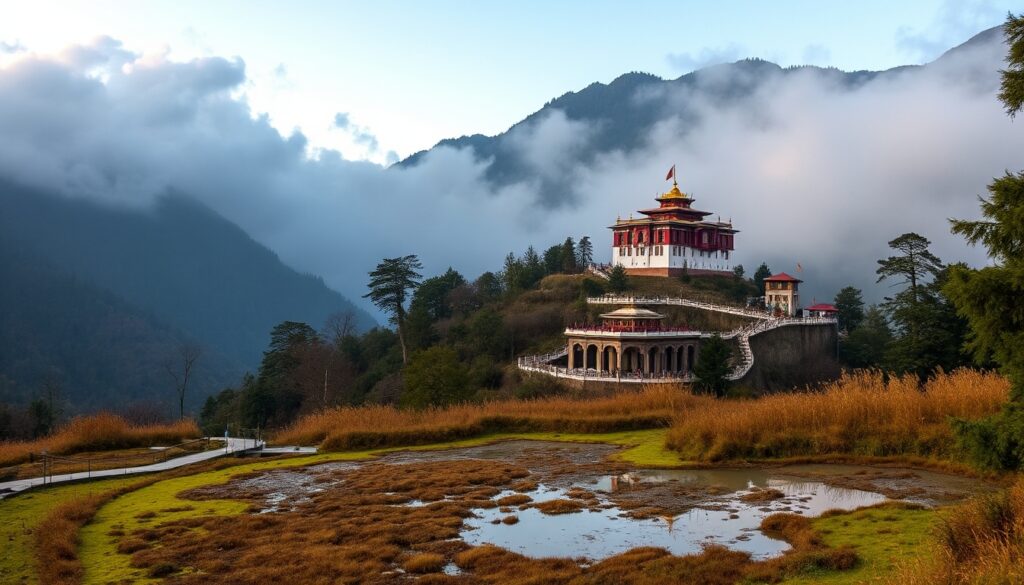If you’re planning a trip to Bhutan, here’s my guide to some of the best spots to visit, zone by zone, to help you experience the magic of this Himalayan kingdom without getting overwhelmed. Each region has its own unique vibe, from spiritual retreats to adventure treks and lush landscapes. Here’s how to cover each area without backtracking, making the most of your journey through Bhutan.

Paro: Mystical Gateways and Spiritual Heights
Paro Taktsang (Tiger’s Nest Monastery)
One of the most iconic spots in Bhutan, Tiger’s Nest Monastery sits dramatically on a cliffside nearly 3,000 meters above sea level. The hike up can be challenging but it’s absolutely worth it! I’d suggest starting early for the freshest air and fewer crowds. The climb takes around 5-6 hours round trip, depending on your pace, with jaw-dropping views along the way.

Other Gems in Paro
- Paro Dzong: This fortress-monastery has stunning views of the valley and offers a look into Bhutanese architecture and culture.
- National Museum: Housed in a former watchtower, this museum is a great introduction to Bhutan’s history and art, with displays of traditional masks, weapons, and thangkas (religious paintings).
- Drukgyel Dzong and Kichu Lhakhang: Visit the ruins of Drukgyel Dzong and experience the serene atmosphere of Kichu Lhakhang, one of Bhutan’s oldest temples. Both sites are steeped in history and have great photo ops.
Thimphu: Bhutan’s Modern Capital with a Traditional Heart

Must-Sees in Thimphu
- Buddha Dordenma: This giant Buddha statue towering over the city is one of the largest in the world and a great spot to kick off your Thimphu exploration.
- Tashichho Dzong: Serving as both a monastery and government center, this impressive building is a must-visit, especially around sunset when it’s beautifully lit.
- Motithang Takin Preserve: Home to the takin, Bhutan’s national animal. It’s a quirky creature that looks like a cross between a cow and a goat.
Culture and Shopping
For a deeper dive into Bhutanese culture, head to the National Textile Museum and Handicrafts Emporium where you can see (and buy) beautifully woven fabrics. If you’re there over the weekend, don’t miss the Thimphu Weekend Market where locals sell everything from fresh produce to handicrafts.
Punakha: Lush Valleys and Spiritual Sites

Punakha Dzong
This is hands down one of the most beautiful dzongs in Bhutan, set at the meeting point of the Mo Chhu and Pho Chhu rivers. It’s surrounded by lush green valleys, and in spring, purple jacaranda trees bloom around the dzong, making it extra picturesque.
Nearby Experiences
- Dochula Pass: On the way to Punakha from Thimphu, this pass offers stunning panoramic views of the Himalayas on a clear day, with 108 memorial chortens adding to the serene atmosphere.
- Chimi Lhakhang: Known as the fertility temple, this quirky shrine is dedicated to the “Divine Madman.” It’s popular among couples seeking blessings for children.

Bumthang Valley: The Heart of Bhutanese Tradition
Temples and Fortresses
Bumthang is often considered the spiritual heart of Bhutan. Jakar Dzong is the largest fortress in the region, offering views of the lush valley. Don’t miss Kurje Lhakhang, where you can see ancient wall paintings and meditation caves. There’s also Tamshing Lhakhang, which has some of the oldest paintings in Bhutan.

Ura Valley
If you’re up for a scenic drive, the Ura Valley is a charming village surrounded by hills and pastures, and it feels like stepping back in time. The Ura Yakchoe festival, held annually, is a unique experience if you’re lucky enough to visit during this time.
Phobjikha Valley: Nature’s Sanctuary
Gangtey Monastery and Black-Necked Crane Information Centre
Phobjikha is an idyllic valley, and if you visit in winter, you might spot the endangered black-necked cranes that migrate here. The Gangtey Monastery overlooks the valley, and the trails around it are perfect for nature walks. The Black-Necked Crane Information Centre is a great stop to learn more about these rare birds and Bhutan’s conservation efforts.

Travel Tips for Bhutan
- Best Time to Visit: October to November and March to April are ideal. You’ll enjoy clear skies and vibrant festivals.
- Packing Essentials: Bring layers for the varying altitudes and weather, comfortable hiking shoes, and a camera to capture the stunning landscapes.
- Travel Permits: Book your trip through a licensed Bhutanese tour operator, as they handle necessary permits and provide guidance on visa requirements.
This itinerary makes it easy to see Bhutan’s highlights without doubling back. Bhutan’s mix of serene landscapes, spiritual sites, and friendly locals make it a truly unique travel experience.